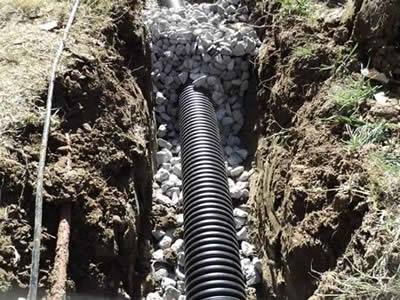A French drain empties water pools from your yard. The size of a French drain depends on the size of your yard and the scope of your drainage issue. Installation of a French drain helps in eliminating free-standing water that is inconveniencing and can lead to wood rot. The best way to install a French drain is to use slotted drainage pipes. The slotted pipes are preferred to perforated pipes because they reduce the quantity of soil particles that get into the pipe.

Steps in the Installation of a French Drain
Plan the Location
This involves figuring out where the excess water is pooling and the location you want it to go. For the drainage process to be proper, you need to let out the water away from your home at a lower elevation point.
Dig a Trench
It would help if you dug a trench from where the water is pooling to your chosen outlet. Force of gravity would help if your drain slopes down.
Place Filter Fabric on the Trench
You need to line filter fabric in excess on the sides to keep the drain dirt free.
Compact Gravel Bedding
Pouring gravel stone along the bottom of the trench is an important aspect of the process.
Connect the Pipes
You need to ensure that you install an inlet at the point where pooling occurs. Carry out the necessary pipe system fittings to extend to the outlet point.
Set the Drainage Pipe in the Trench
While laying your pipe structure, you need to ensure that the drainage holes in the drainage pipe are pointed downwards. You can test the flow of the drain to ensure it works efficiently.
Cover with Filter Fabric and Gravel
After covering your pipe with gravel, you need to wrap excess fabric above it to provide an extra layer of protection.
Backfill with Topsoil
Finally, cover the entire French drain system with topsoil. You can also cover your trench with landscaping stone to make it easier to dig up for repair or inspection.
Contact us at Accurate Lawn Leveling for unrivaled expertise in the provision of drainage services and advice on having a beautiful lawn.
